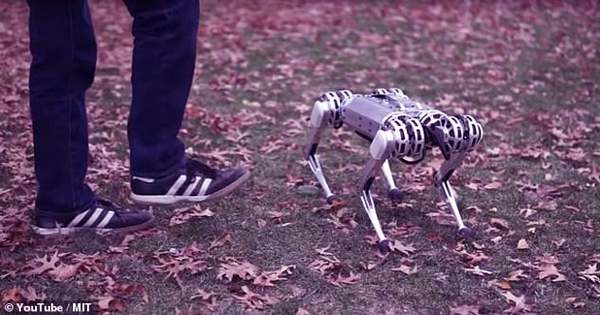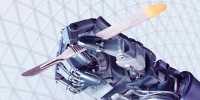The Cheetah 3, Evolved from the predecessor of “Mini Cheetah”. Move on top of the robot-dog, a new robotic star has been born. MIT has just unveiled its Uber Dynamic Back-Flipping Robot for one of the world’s smartest creatures. Lightweight and smaller with easily replaceable modular motors, the next-level bot can trot on uneven surfaces at speeds of about 8 kilometers (5 miles) per hour – twice as fast as a normal person – and its makers believe it can double. Which gave a bit of fine-tuning?
Lead developer Benjamin Katz, a technical associate in MIT’s Department of Mechanical Engineering, said in a statement. “The rate at which it can change forces on the ground is really fast.” “When it’s running, its feet stay on the ground for about 150 milliseconds at a time. This is when a computer tells you to increase the power on the top of the foot, then change the balance and then decrease it very quickly to reduce that energy. So, it’s really dynamic. Things like that can jump in the air with each step or run with two feet on the ground at once. Most robots are not able to do this, so go much slower.
Not only can it throw the 360 degrees back flip from a standing position, but the mini cheetah is also able to adjust itself with ninja-like cunning when kicked to the ground. Its electric motor design was reconfigured from a dozen Mason jar-shaped motors used in drones and remote-controlled aircraft. Each leg has three motors which give it its huge speed and it is relatively easy to put all its parts together. You know, if you are a mechanical engineer. Katz said, “You can put these parts together almost like Lagos.”
In the experiment, the mini cheetah was able to maneuver through uneven terrains on and off-campus hallways. The team plans to present its design at an international conference on robotics and automation in May. They plan to build an additional 10 machines to lend to other labs so that other researchers have the opportunity to test new algorithms and techniques.
Katz said, “A big part of why we built this robot is that it makes it so easy to test and just try crazy things, because the robot is very strong and doesn’t break easily, and if it does break, it’s not easy and not very expensive to fix.”
“Finally, I hope we can have a robotic dog race through an obstacle course, where each team controls a mini cheetah using different algorithms and we can see that the strategy is more effective.” Associate Professor of Mechanical Engineering Kim Dr. “That’s how you speed up research.” We are currently taking wagers.















